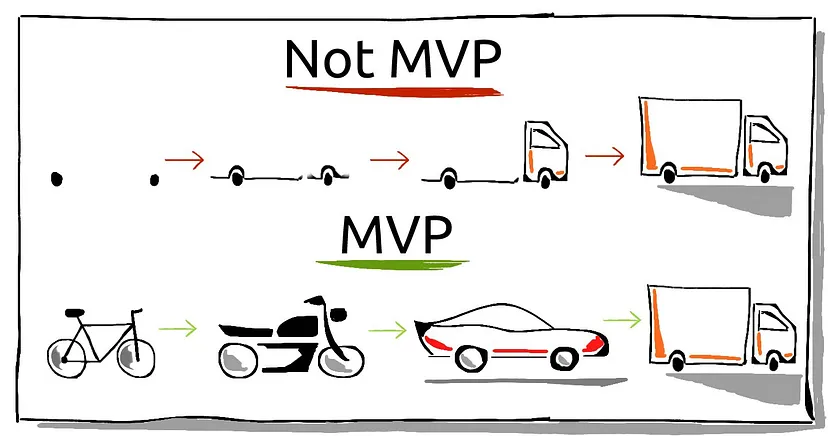MVP Iteration
What is MVP Iteration?
Definition:
MVP Iteration, short for Minimum Viable Product Iteration, is a development approach that focuses on the continuous refinement and enhancement of a product’s initial version. The Minimum Viable Product (MVP) is the basic version of a product that includes essential features to meet customer needs. The iterative process involves releasing successive versions of the MVP, each incorporating improvements based on user feedback, performance metrics, and evolving market conditions.
Analogy:
Consider MVP Iteration as the process of sculpting a piece of clay. The initial version is the basic form, and each iteration involves refining and reshaping based on feedback and insights, ultimately creating a product that aligns more closely with user expectations.
Further Description:
MVP Iteration involves several key components:
Release of Minimum Viable Product (MVP): The initial version is launched with essential features to gather user feedback and test the product-market fit.
User Feedback Collection: Actively seek and collect user feedback to understand strengths, weaknesses, and areas for improvement in the MVP.
Data Analysis: Utilize analytics and performance metrics to assess user engagement, identify usage patterns, and measure the impact of the MVP on business objectives.
Prioritization of Enhancements: Based on user feedback and data analysis, prioritize features and improvements for subsequent iterations.
Development of Iterative Releases: Implement enhancements and release successive versions of the product, incorporating user-driven improvements and addressing identified issues.
Testing and Validation: Thoroughly test each iteration to ensure that new features integrate seamlessly and that the overall user experience is enhanced.
Continuous Learning: Treat each iteration as a learning opportunity. Understand how users interact with the product and adapt future developments accordingly.
Why is MVP Iteration Important?
User-Centric Development: MVP Iteration places user feedback at the center of product development, ensuring that the product evolves in response to real user needs and preferences.
Risk Mitigation: By releasing an MVP and iteratively enhancing it, development teams can identify and address issues early, reducing the risk of investing resources in a product that may not meet market expectations.
Efficient Resource Allocation: MVP Iteration allows for the efficient allocation of resources, focusing efforts on features that demonstrate the most significant impact and value to users.
Adaptability to Market Changes: In rapidly evolving markets, MVP Iteration enables businesses to adapt quickly to changing conditions, emerging trends, and competitive landscapes.
Examples and Usage:
Instagram: Instagram initially launched as a photo-sharing app with basic features. Over iterations, it introduced new functionalities like Stories, IGTV, and shopping, evolving based on user engagement and market trends.
Slack: Slack’s MVP initially focused on team communication. Through iterative releases, it incorporated integrations, file-sharing improvements, and other features based on user feedback, making it a comprehensive collaboration platform.
Google Maps: Google Maps began as a mapping application but iteratively added features like real-time traffic updates, navigation, and local business information to enhance user experience continually.
Key Takeaways:
- MVP Iteration emphasizes continuous improvement, with each release building upon the previous version to enhance user experience and value.
- Actively seek and integrate user feedback into the development process to address user needs and expectations effectively.
- Use data analytics and performance metrics to make informed decisions about feature prioritization and improvements.
- Focus resources on high-impact features and enhancements, optimizing the development process and ensuring a balance between innovation and efficiency.





